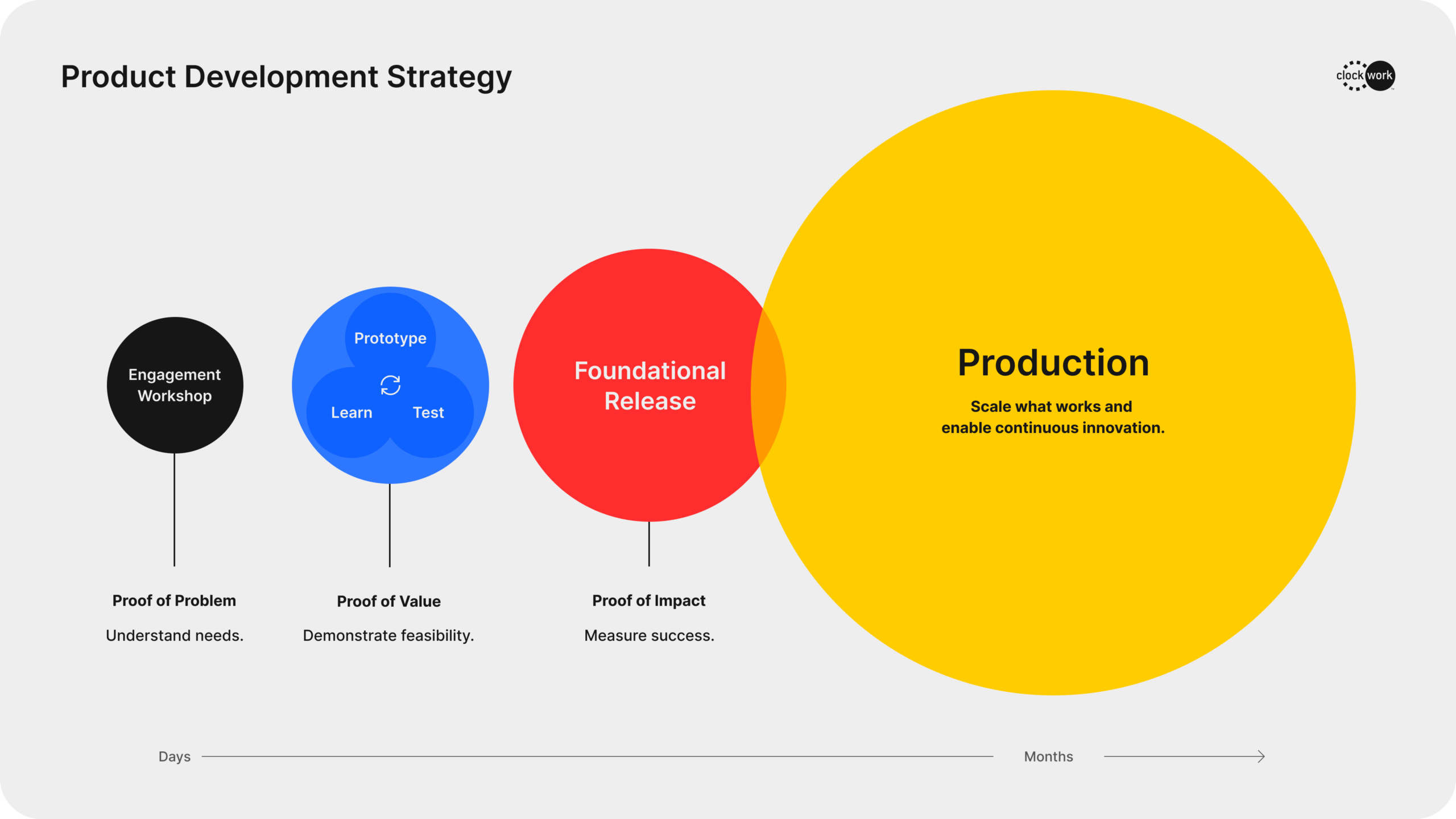One question we always ask clients who are starting off new digital initiatives is, “What does success look like?” Clearly defining success is essential to aligning teams on what we’re working towards, beyond simply making things better. It asks us to dig deeper into what better means.
The three lenses of digital success
Success extends beyond a sometimes narrow view; it’s easy to think of higher engagement, form completion and conversion. And, it can mean different things to different stakeholders, so it’s important revisit this question often throughout the project. At Clockwork, we take it a step further. We look at success through three distinct lenses: customer, business, and employee success.
What does customer success look like?
This lens considers what success looks like from your customer’s point of view. Positive customer experiences benefit the overall business, so it’s important to think about what they are trying to achieve and how you can measure that. There are clear metrics like customer satisfaction or NPS, but what else might be an indicator of success for customers?
- If we are building a habit or behavior-changing product, such as a meditation app, what is the number of consecutive days of usage? This would indicate customers are making a positive behavior change and getting value from the experience.
- Bonus points if you display this information to the customer, which triggers our brain’s reward receptors!
- Alternatively, we could look at user retention rates, or the percent of customers who continue to engage with a tool or app. This indicates they see the experience as useful and providing enough value to come back.
- Imagine we’re launching a digital experience that requires consumers to fill out forms. Have we reduced the time it takes to complete the form while still gathering important information? Forms and asking for unnecessary information are a major roadblock for many users; reducing friction in that experience helps everyone.
What does business success look like?
This lens asks the question “How will the business know we’ve been successful?” or “What does success look like to our business stakeholders?” Oftentimes, we can look at sales or conversion rates as indicators. These are metrics affect the bottom line and can indicate a clear ROI. But what else might be an indicator?
- If we are launching a new website or app, consider if reduced calls to support or customer service is a viable metric. This may indicate that the content is helping users answer their questions and that the experience is as seamless as you’d hoped.
- Similarly, if you are working on new features for a product, we should consider measuring feature penetration. This will show us the percentage of customers who are using the features we have available, indicating we’ve implemented useful features and should see a return on our investment.
- Often, digital initiatives include new internal systems or tools that, when implemented correctly, should make our employees’ lives easier. This metric might cross into the third lens, but process automation could clearly indicate success for this type of project. If we’ve been able to automate some steps, teams can focus on higher-priority tasks.
What does employee success look like?
Last but not least, we examine employee success. This lens explores the experiences of you and your staff, the people creating content and supporting the digital experience in the long term. Many business and customer success metrics can positively impact employee success, but what other factors might be indicators for this group?
- Imagine we’re engaging a new tool or technology to support our business processes or digital ecosystem. We might measure the percentage of employees who have gained skills on this new technology through certifications or skills assessments.
- Digital initiatives often require teams to work across silos and clearly articulate who is responsible for what tasks. Measuring the number of disciplines or expert areas represented in team meetings and team-reported clarity on responsibilities could help illustrate the initiative’s internal impact.
These three lenses don’t operate in isolation; they create a cycle of sustainable growth. When customers achieve their goals through your digital experience, they drive the business results that enable ongoing investment in better tools and experiences. Empowered employees then create even stronger customer experiences, amplifying the cycle.
By asking, “What does success look like?” and measuring across all three dimensions from the start, you’re not just tracking metrics—you’re building a foundation for long-term value creation. This approach helps teams stay aligned on what matters most and make strategic trade-offs with confidence. When your digital initiatives serve customers, business objectives, and employee needs simultaneously, you create experiences that don’t just perform well; they endure.




